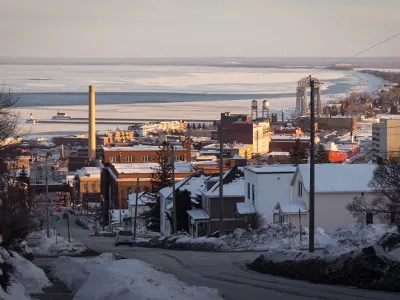Minnesota Power customers will see bills decrease, as regulators cut rate increase request
February 6, 2018

On Tuesday, the state Public Utilities Commission (PUC) approved a rate increase for Minnesota Power electric customers. The increase was much smaller than the utility had requested, and is less than the interim rate increase already applied to customers’ bills, so most or all households will see a small refund when the new rates go into effect.
In this blog, I’ll explain the coming changes to residential bills, and how to weigh in on Minnesota Power’s proposed $350 million natural gas power plant, the next policy issue on the docket.
Modest rate increase approved
On average, residential customers will see their electric rates increase by 3.5%, much lower than Minnesota Power’s initial request of 18%. The PUC found that Minnesota Power overstated the amount of money needed to run their utility, largely because they asked for too high of a return for shareholders. Customers can actually expect discounts when the new rates go into effect, because the final rate increase is less than the 5.07% interim increase customers have already been paying. Customers will receive refunds for the difference, and electric rates will be lower going forward. The new rates are expected to go onto customers’ bills late this year, as it may take several months for final details to be resolved. Here are some of the major issues CUB has been watching in this case:- Monthly service charge will remain the same. The PUC denied Minnesota Power’s request to increase the service charge – a win for customers. High service charge mean customers can’t save as much money by conserving energy.
- Tiered pricing preserved that rewards energy efficiency and low-usage customers. Minnesota Power currently has five pricing tiers. The price of electricity increases as a customer uses more energy each month, which rewards customers for conserving energy. Lower-income households tend to use less electricity, so the pricing tiers also help keep low-income families’ bills low. Minnesota Power had proposed to consolidate the five usage tiers down to two, with the highest rate increases going to the people who use the least electricity. However, the utility and parties to the PUC process worked out a compromise to keep four usage tiers.
- No additional charge expected for industrial rate discount. Apart from the general rate increase described above, Minnesota Power had put in place an energy-intensive, trade-exposed (EITE) discount for 11 large mining and forest industry customers, with the intention of helping those companies be more competitive in global markets. The discount is paid for by other Minnesota Power customers. However, if these large companies increase their production and purchase more electricity, the extra revenues collected by Minnesota Power are refunded to the customers who paid for the discount. Industrial activity in northern Minnesota has increased, and there will be no surcharge for the EITE rate at this time. The industrial discount is expected to remain in place for another three years.